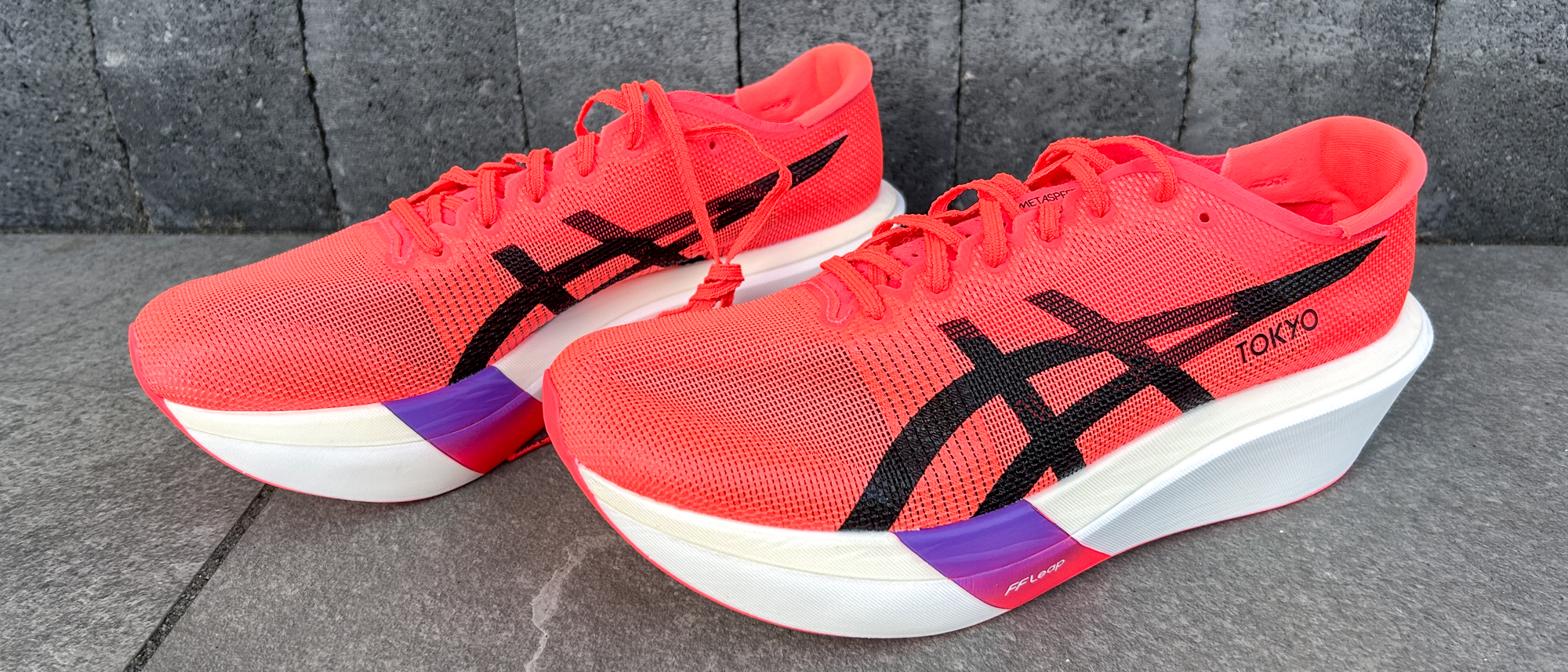Tom's Guide Verdict
The Asics Metaspeed Sky Tokyo has a couple of important upgrades on the Metaspeed Sky Paris, which help make it even lighter, springier and faster. It’s one of the fastest shoes I’ve ever run in, and definitely worth considering if you’re in the market for a racing shoe.
Pros
- +
Lively and fast ride
- +
One of the lightest racers available
- +
Bouncy and comfortable for long events
Cons
- -
Outsole is not very durable
- -
More expensive than previous model
Why you can trust Tom's Guide
The Asics Metaspeed Sky Paris is the shoe I’ve used to run my marathon PR twice, along with my half marathon PR. It might well be my favorite racing shoe ever, so the fact that Asics has managed to improve on it with the Metaspeed Sky Tokyo is really saying something.
The improvements are all found in the midsole, which now includes a layer of the FF Leap foam introduced with the Asics Metaspeed Ray, which makes the Sky Tokyo a lighter and springier shoe than its predecessor.
It’s undoubtedly one of the best carbon plate running shoes on the market, but faces stiffer competition than the Metaspeed Sky Paris for the title of best overall, with the Puma Fast-R Nitro Elite 3 being another incredible racer that launched in 2025.
Asics Metaspeed Sky Tokyo review: Price and availability
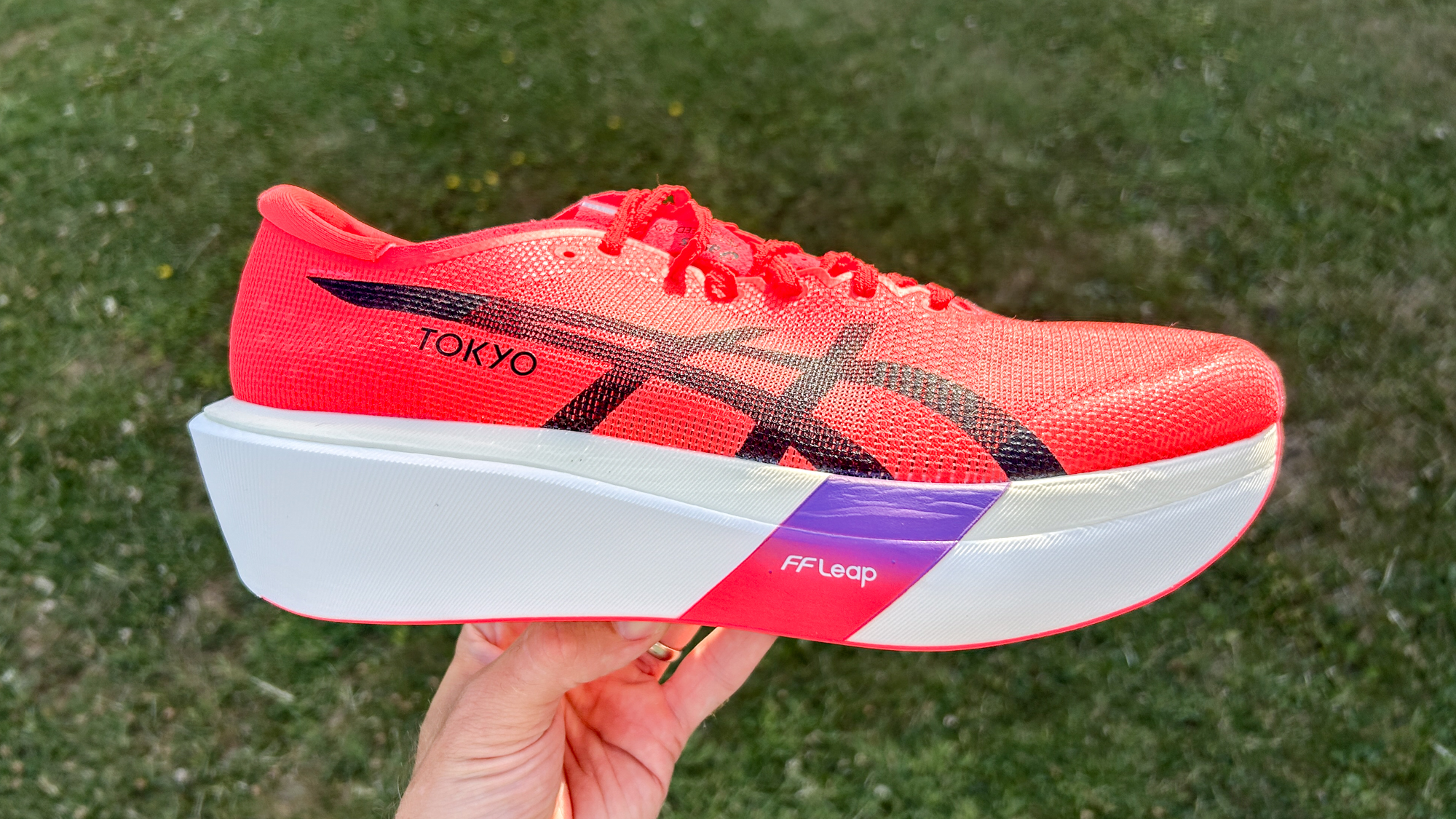
The Asics Metaspeed Sky Tokyo launched in July 2025 and costs $270 / £240, which is a $20 price rise on the Asics Metaspeed Sky Paris. It launched alongside the Asics Metaspeed Edge Tokyo, which has a slightly different design to suit different running styles, and the Asics Metaspeed Ray, which is the lightest Asics racer to date and a little more expensive at $300 / £265.
Asics Metaspeed Sky Tokyo review: Design and fit
The Asics Metaspeed Sky Tokyo launched in the Flash Red/Black color I tested, which is the only design available at the moment.
It has the same fit as the Metaspeed Sky Paris, and I had no problems with the fit in my normal running shoe size. It didn’t rub on long runs and held my foot securely for fast efforts.
The Metaspeed Sky Tokyo weighs a mere 6oz in my US men’s size 10, which makes it one of the lightest shoes I’ve ever tested, though the Asics Metaspeed Ray is even lighter at just 4.8oz.
Get instant access to breaking news, the hottest reviews, great deals and helpful tips.
Despite being so lightweight, you still get a chunky stack of foam underfoot, with the Metaspeed Sky Tokyo being 39.5mm tall at the heel and 34.5mm at the forefoot with a 5mm drop.
Upper

I’ve always been impressed by the uppers on Asics’s Metaspeed racing shoes, and that remains the case with the Metaspeed Sky Tokyo.
The MotionWrap 3.0 material is lightweight and breathable, but also has just enough padding to be comfortable without adding unnecessary weight.
Asics also uses my preferred ‘sawtooth’ laces as standard, which stay tied and help to hold the foot in place reliably even when rounding corners at speed.
Midsole
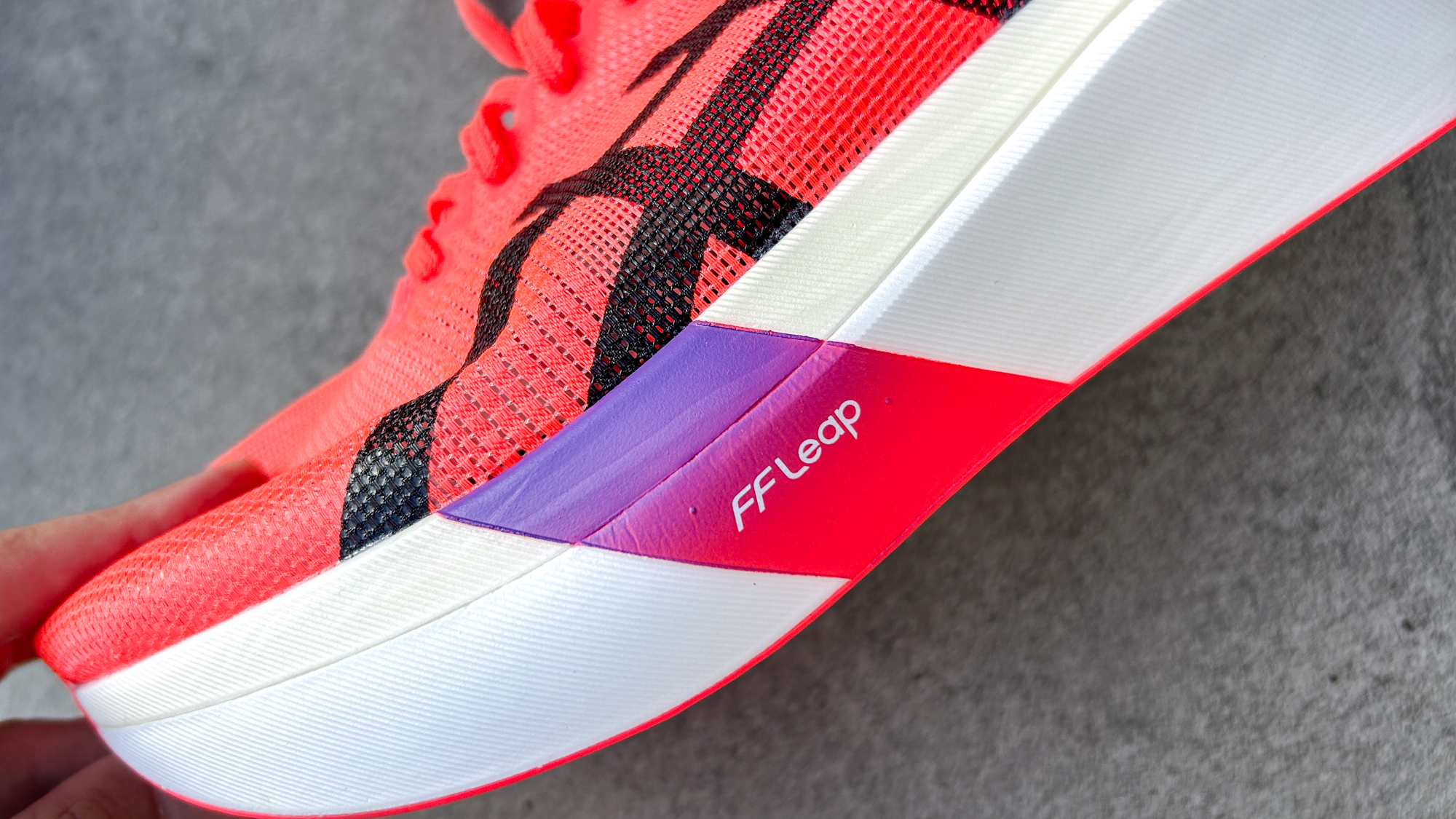
The midsole is where the big updates are with the Metaspeed Sky Tokyo, as it now uses two different foams — FF Turbo+ and FF Leap.
FF Turbo+ is the foam used on the Metaspeed Sky Paris, and it’s used for the top layer on the Metaspeed Sky Tokyo, while FF Leap is a lighter, springier foam that’s used for the bottom layer.
In between the two foams is a full-length carbon plate that adds propulsion and stability. This plate sits quite high in the midsole and isn’t as scooped as the plate on the Metaspeed Edge Tokyo, and the two layers of foam are reversed on the Edge Tokyo, with FF Leap on top.
Asics has had two racing shoes in its line-up since the original Metaspeed, with the Sky and Edge being designed for different running styles.
While there are differences in how the shoes feel, this approach is confusing, and I haven’t found that my preferences always align with the shoe that should theoretically suit my running style.
Outsole
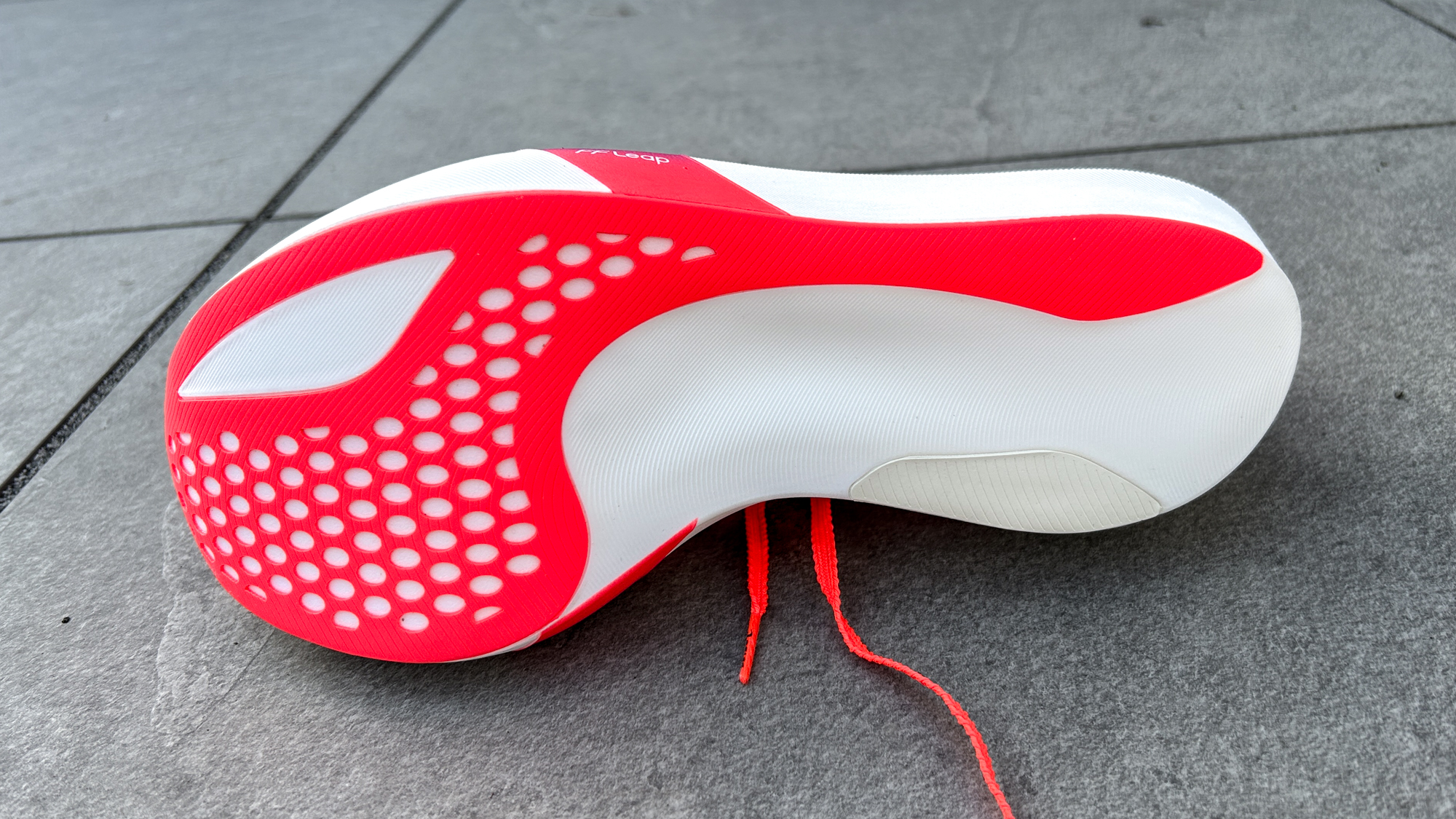
The AsicsGrip outsole on the Metaspeed Sky Tokyo is very minimal, just covering the forefoot and small parts of the heel.
It’s similar to the design on past models of the shoe, and while I’ve never had a problem with grip, the exposed foam at the heel starts to show signs of wear and tear quickly.
This doesn’t affect performance in my experience, but it’s not as durable as shoes with more rubber coverage at the heel.
Asics Metaspeed Sky Tokyo review: Running performance
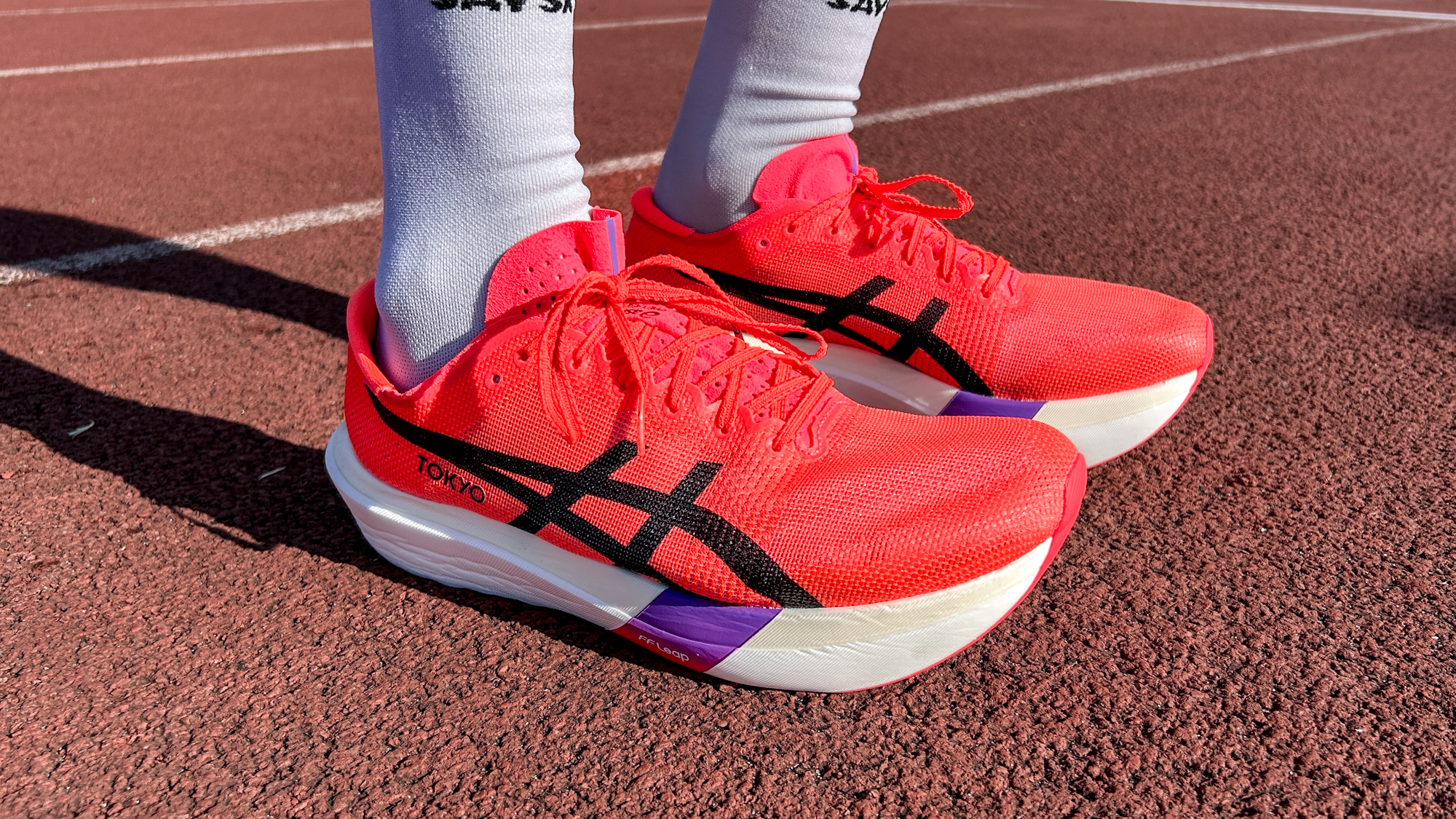
I had very high expectations of the Metaspeed Sky Tokyo, having loved the Metaspeed Sky Paris so much, and I’ve put the shoe through a wide range of fast runs to test out its performance.
It impressed me on every run, offering a springier ride than its predecessor while also being lighter. Whether I’ve been doing short, fast reps in the shoe or long tempo or race-pace runs, it’s always felt amazing.
The FF Leap foam under the forefoot adds more booming bounce to that area than you had with the Metaspeed Sky Paris, and the softer material means the Metaspeed Sky Tokyo is a little less stable than its predecessor; it’s a trade-off I’m happy to make for the extra spring.
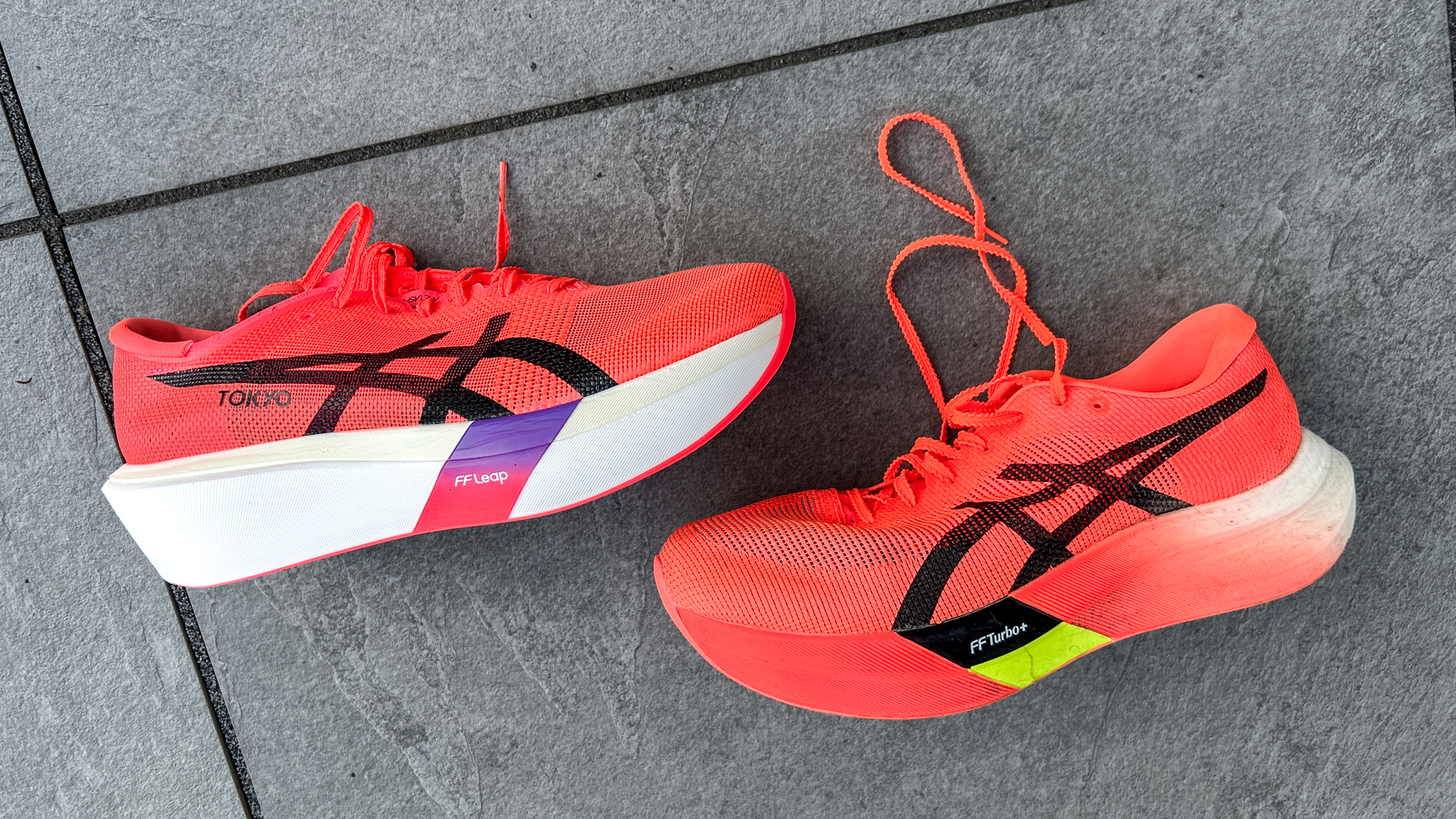
It’s still not as soft and squishy underfoot as some shoes, including the Metaspeed Ray and Saucony Endorphin Elite 2, but I find the firmer feel of the Metaspeed Sky Tokyo helps to push you onto your forefoot quickly with each stride, and it’s still comfortable over long distances.
Like all of the best super-shoes, the Metaspeed Sky Tokyo makes holding a fast pace feel easier, but it’s also especially good when you’re running on tired legs at the end of sessions or races.
The bounce from the foam and the plate comes even when you start to shuffle and your running form deteriorates, and the fact that the shoe is extremely light helps you keep picking up your feet.
Should you buy the Asics Metaspeed Sky Tokyo?
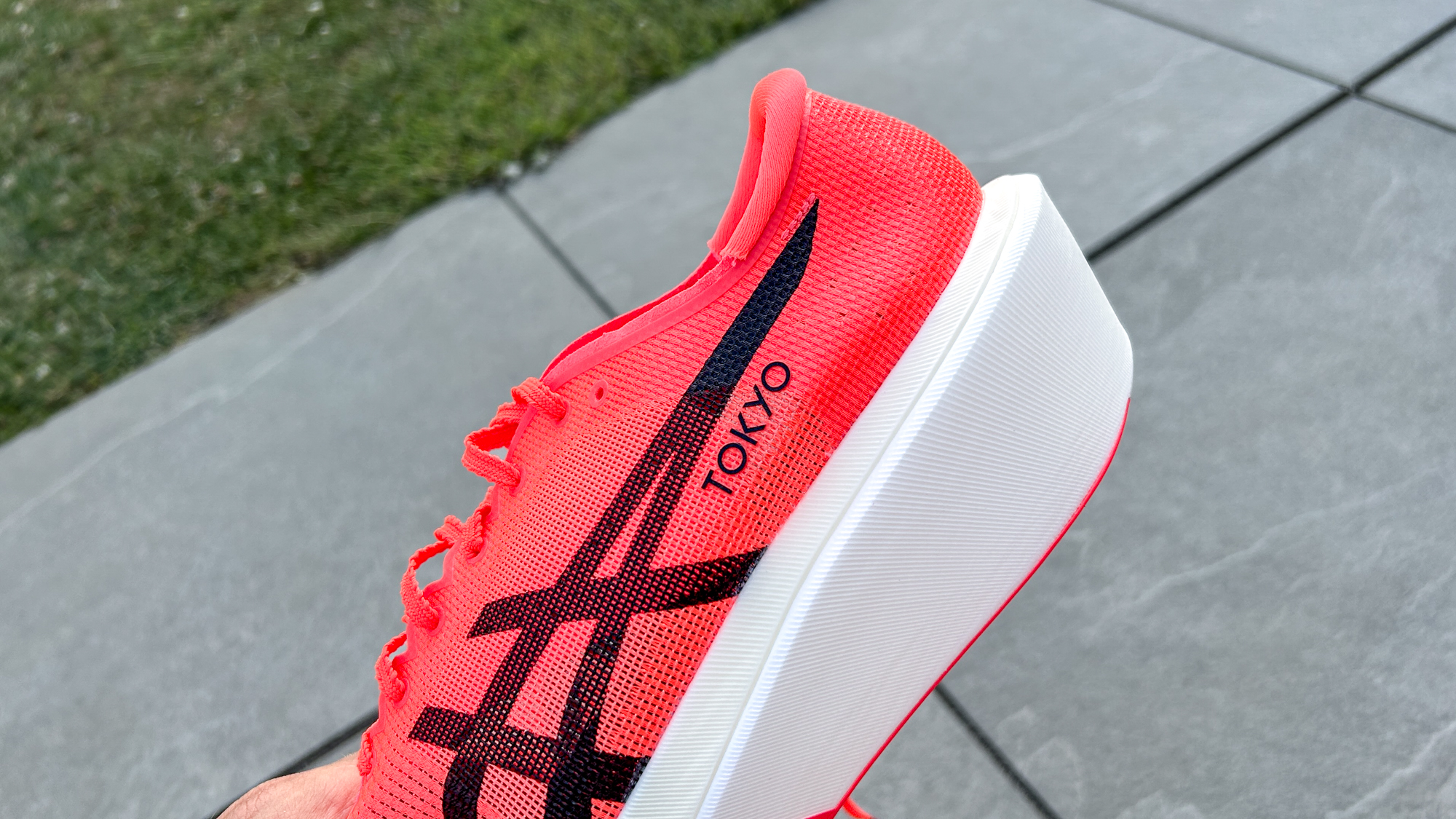
Whatever the distance you plan on racing, the Asics Metaspeed Sky Tokyo is a top option worth considering.
However, while the Metaspeed Sky Paris was my favorite racer available from any brand last year, the Metaspeed Sky Tokyo faces stronger competition from both within Asics and without.
The Asics Metaspeed Edge Tokyo is also a great racer with a slightly different feel — it’s more comfortable under the forefoot thanks to the lower plate, which can be beneficial for longer runs and races.
Then there’s the Metaspeed Ray, which is lighter and springier than the Sky Tokyo, though less stable as it doesn’t have a full carbon plate.
The Ray is great fun and very fast, but you need to have strong legs to unlock its benefits, and I’d rather be in the more stable Sky Tokyo for a marathon myself, as the Ray might be too wobbly late on in the race.
Perhaps the sternest competition comes from the Puma Fast-R Nitro Elite 3, which is also very light and delivers a fast, efficient ride thanks to its rockered design.
The Metaspeed Tokyo shoes and the Fast-R 3 make up my top tier of racers right now, and there's nothing to split them on performance, but the ride feel is a little different with the Puma being more rockered and the Asics more bouncy, which might suit different preferences.

Nick Harris-Fry is an experienced health and fitness journalist, writing professionally since 2012. He spent nine years working on the Coach magazine and website before moving to the fitness team at Tom’s Guide in 2024. Nick is a keen runner and also the founder of YouTube channel The Run Testers, which specialises in reviewing running shoes, watches, headphones and other gear.
Nick ran his first marathon in 2016 and became obsessed with the sport. He now has PBs of 2hr 25min for the marathon and 15min 30sec for 5K. Nick is also a qualified Run Leader in the UK.
Nick is an established expert in the fitness area and along with writing for many publications, including Live Science, Expert Reviews, Wareable, Coach and Get Sweat Go, he has been quoted on The Guardian and The Independent.
You must confirm your public display name before commenting
Please logout and then login again, you will then be prompted to enter your display name.
